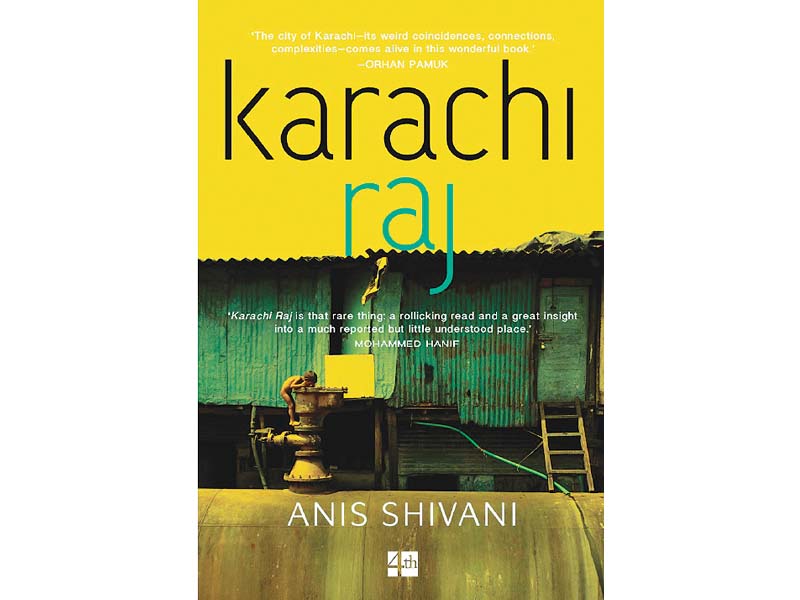
The best thing about Karachi Raj is that it does not capitalise on the violence and unpredictability that has laid siege to Karachi to either steer the narrative or engage the reader. On the contrary, it spins gold out of the straw of ordinary lives that are set against the backdrop of the city.
However, the physical aspects of the city do not pique Anis Shivani’s interest. Through the disparate yet interconnected stories of Seema, Hafiz, Ashiq and Claire, the author makes Karachi a character rather than a locale in his book.
Each story sheds light on experiences that are fundamentally different from each other even though they are set in the same metropolis. Karachi is, therefore, presented as a city that cannot be classified through a single experience. For Shivani, the city is defined by the lives of its inhabitants.
Read: Book review: Street Smart
The characters in Karachi Raj are equally diverse and have been fleshed out with an appropriate measure of eccentricity and humanity. Each of them is acutely aware of the perks and perils of the city they call home. Through a diverse menu of characters, Shivani explores an assortment of sights, sounds and flavours that make Karachi what it is.
However, there appears to be an equilibrium that holds the narrative together. At times, anarchy in the city is offset by a character’s optimism while personal tragedies in a character’s life are evened out by a momentary spell of peace in Karachi.
Whether this can be termed as the desire of balance or mere caution remains a matter of debate. However, as a resident of this busy, bustling and boisterous city, I could instantly relate to this technique.
Throughout the novel, I realised the author was simultaneously evoking and revoking stereotypes about Karachi found in fiction and non-fiction. For instance, he focused on the layman’s comparison of the years before and after General Ziaul Haq came into power and how they impacted the fate of the city. The comparison has found its way into books by local and international authors and is used as a reference point to understand the region. Although Shivani mentions this simplistic classification, he does not use it as a driving force to bring his novel to its logical conclusion.
Shivani has also carefully dodged the liberal versus conservative divide –a debate which is at the risk of becoming stale. As a result, the author is able to shift gears and explore the city through a different lens.
Another facet of this book which is likely to attract a wider readership is the effective use of temporal confusion. Various trends that prevailed in Pakistan over the decades have been compressed into a single period in time. For example, Ashiq’s description of students at University of Karachi clad in bell-bottoms and sporting oversized spectacles belongs to an era that is temporally closer to General Zia’s regime. However, it is difficult to confirm these details. This made me wonder if Pakistan’s milieu under the military dictator was just a formal attempt to institutionalise practices that had already been a part of its culture.
The author also challenges stereotypes by building a deeper understanding of the city. As a result, the concept of a basti does not instantly evoke images of squalor. Instead, it is the people who live in it that determine how it is viewed.
Overall, this is a simple book with complex characters that prove Karachi does not have a raj – everyone who is caught in its fold rules his or her own territory.
Title: Karachi Raj
Author: Anis Shivani
Pages: 412
Publisher: HarperCollins Publishers
ISBN: 978-9-35-116081-6
Price: Rs1,204
(Available at Liberty Books)
The writer reads for a Social Sciences and Liberal Arts degree and maintains a scholarly interest in history of nationalism
Published in The Express Tribune, September 6th, 2015.
Like Life & Style on Facebook, follow @ETLifeandStyle on Twitter for the latest in fashion, gossip and entertainment.





























1714129906-0/Clint-Eastwood-(1)1714129906-0-270x192.webp)






COMMENTS
Comments are moderated and generally will be posted if they are on-topic and not abusive.
For more information, please see our Comments FAQ